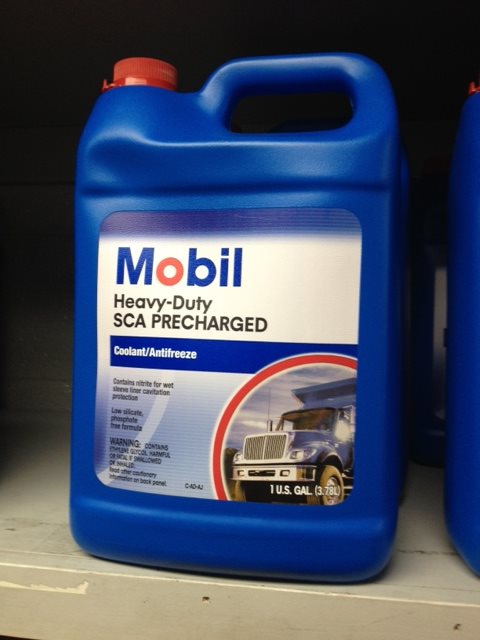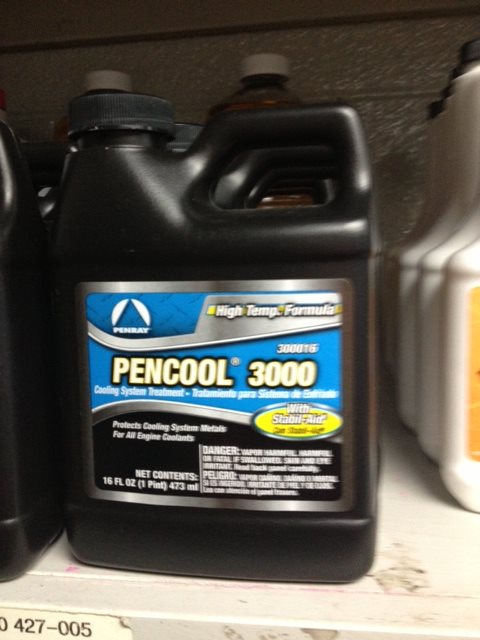What is there to maintaining the cooling system? At each regular service interval of the engine the coolant should be checked with a hydrometer, this will give you the freeze point of your coolant. Freeze point should be between -25 and -50. Test strips should be used to check the condition of the coolant, these strips tell how much of the additives are left in the coolant. These additives are called SCA's (supplemental coolant additives), and their purpose is to inhibit corrosion within the radiator and engine. Some engines have a water "filter" which contain SCA's that are time released to help maintain the proper additive levels, but you should still use the test strips even with the filter. SCA's can be added as needed after testing without replacing all of the coolant.

Some interesting facts about cooling systems from the EET Corp. web site- they make and recycle coolant.
- Antifreeze/engine coolant is the most neglected fluid in most vehicles.
- Cooling system failure is cited as the principal reason for engine and transmission failure.
- Cooling system failure is the most common roadside breakdown.
- Just one sixteenth of an inch of mineral deposits on cast iron can reduce heat dissipation
by 40%
So lets talk about coolant, until around 1996 almost all vehicles used Conventional Ethylene Glycol coolant, typically green. An ELC or extended life coolant, also ethylene glycol based, came into use after that with the introduction of new metals into the engine and radiator. There is propylene glycol that is a coolant also but not as widely used. Both are similar in chemical composition with ethylene glycol being less expensive to produce and having a slightly higher boiling point than propylene glycol. The two can be mixed but most manufacturers don't recommend more than a 10% mix. ELC is usually some variation of red, orange, purple, pink, or yellow of the manufacturers choice. The main difference between conventional antifreeze and ELC is not something you can see, it's the additives that prevent all the bad things from happening inside the cooling system. Conventional antifreeze uses a nitrate-based additive and ELC uses organic acid technology (OAT) or some variation of OAT, and these two must NEVER be mixed.
Having the proper mix will save you from headaches down the road. A 50/50 mix is what most manufacturers recommend. NEVER use straight antifreeze, I know you can buy 100% and mix it yourself, however, manufacturers use deionized or distilled water in their mixes because of the minerals in water from different parts of the country. Having these minerals in the coolant can cause a lessening of the ability for the coolant to do its job, minerals also can build up inside the engine and it can loose it's ability to cool as mentioned above. Having too much water can lower the concentrations of the additives and could freeze. Having to high a concentration of antifreeze can cause corrosion, water pump failure, increased engine wear and lessens it's ability to cool or protect from freezing.
Most new trucks come with ELC and the additives do not deplete as fast as the older style green antifreeze which needs changed around 150,000 miles or at least annually. With the newer ELC the typical life is around 600,000 miles or four years. The test strips mentioned above can not be used universally, you must find out what kind of coolant you have before buying for that type of coolant. Strips are available at auto parts stores, just ask. When buying antifreeze, be sure to note on the label for heavy-duty diesel engines. Automotive antifreeze for gas and diesel has different additive packages that will not be good for your truck engine.

Bottom line on cooling system maintenance is,
- Color, know what coolant you have, if you don't know I recommend you change it and keep a record of what it is for topping up if needed.
- Clarity, coolants come in different colors but they all should be clear, if yours is cloudy or has floaties, there could be a problem, get it checked by a shop.
- Freeze point, the most accurate way to check this is with a refractometer, make sure the freeze point is between -25 and -50.
- Chemical protection, use the proper test strips, add the proper SCA's as needed.
EET has developed a table that can guide you on compatibility questions, EET Web Site . They have a really good FAQ area on antifreeze.